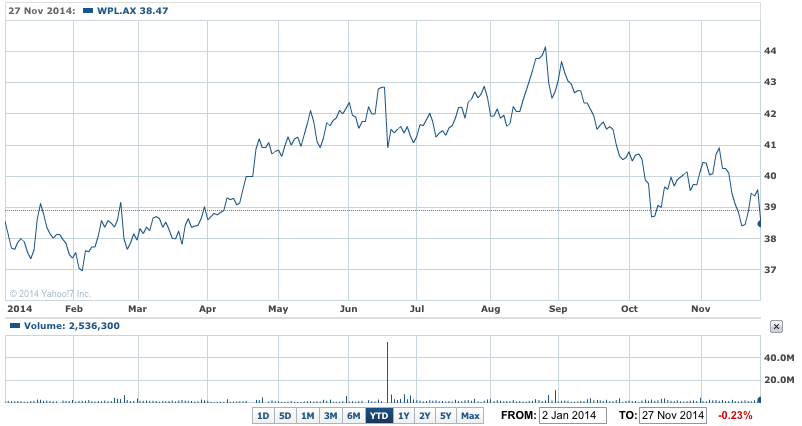At a time when falling oil prices are forcing companies to cutback, lower costs and abandon projects, and falling iron ore and coal prices are forcing companies in those industries into similar action, two announcements yesterday from Woodside (WPL) and Rio Tinto (RIO) respectively will raise a few eyebrows because they announced new multi-million dollar projects.
Woodside surprised with the news that it and its partners will push ahead with the $1.2 billion Persephone gas project off the West Australian coast.
But investors shouldn’t be worried about this project as it is the trigger, along with an agreement this week with the West Australian Government, to the continued operation of the huge North West Shelf gas project and its extension into the next decade.
Woodside revealed it and its partners – BP, Chevron, Shell and BHP Billiton (BHP), approved the project, with gas to start flowing early in 2018.
The news came as world oil prices fell further ahead of last night’s Opec meeting in Vienna.
This project is aimed at supplying gas to the huge gas processing centre which Woodside and its partners operate on the northern WA coast at Karatha.
News of the project’s go ahead came a day after the Woodside led group reached a compromise deal with the WA government which will see around 15% of the gas volumes from the Persephone and Greater Western Flank 2 fields sent to the domestic market (meaning mostly Perth).
It will be the third major development for the North West Shelf in the past six years.
The project will involve a two well, 7 kilometre subsea tieback from the Persephone field to the existing North Rankin Complex.
Woodside CEO Peter Coleman said the project would help maintain supply to the Karratha gas plant.
“The NWS Project celebrated 30 years of domestic gas production and 25 years of LNG exports earlier this year and approval of Persephone is the next step in continuing this success story," he said.
In return, for ensuring the continuation of some gas supply in the WA domestic market into next decade, the shelf partners will be allowed to export 86 million tonnes of more profitable LNG from the two projects, from 2017-18.
The NWS partners needed amendments to its agreement wit the State Government, to be allowed to tap Persephone and GWF2 gas and keep its LNG plant operating at full capacity, so the WA government has agreed to it, in exchange for the commitment to supply gas into the domestic market.
Woodside owns just over 16% of Persephone and will operate the project on behalf of its partners. Woodside shares fell 2.7% $38.47 as oil prices faded in afternoon trading in Asia.
WPL YTD – Woodside pushes ahead at Persephone

And Rio Tinto said it has approved the development of the development of a fourth pipe, known as A21, at the remote subarctic Diavik diamond mine in Canada.
Rio said in a statement to the ASX that the A21 pipe development “was part of the original mine plan and is estimated to cost US$350 million over four years”
"The Diavik Joint Venture (Rio Tinto 60 per cent; Dominion Diamond Corporation 40 per cent) has approved the 2015 programme of works and the A21 diamond production is planned for late 2018. The A21 production will provide an important source of incremental supply for Diavik, ensuring the continuation of existing production levels.
"The A21 kimberlite pipe is located just south of Diavik’s existing mining operations. A21 development will require rockfill dike construction to encircle the ore body located just offshore of existing mining operations at Lac de Gras.
"Diavik will utilize the same innovative design and engineering technologies used to construct the Diavik mine’s two other dikes that enabled mining of three existing pipes.”
Rio’s head of Diamonds & Minerals, Alan Davies said “Our decision to invest in the Diavik A21 project reflects our strong confidence in the diamond sector and in our ability to compete effectively in the industry.”
The Diavik Diamond Mine, is located 300 kilometres northeast of Yellowknife in Canada’s Northwest Territories. It began production in 2003 and became a fully underground mining operation in 2012. The mine produces predominantly gem-quality diamonds destined for high end jewellery in all major consumer markets around the world.
Rio said Diavik’s ore reserves will be updated in the first quarter of next year. The current mine plan has production ending in 2023.
Rio tried to sell its diamond group, including Diavik, in early 2013, but couldn’t find a buyer.
Rio shares eased 0.6% to $58.02.













